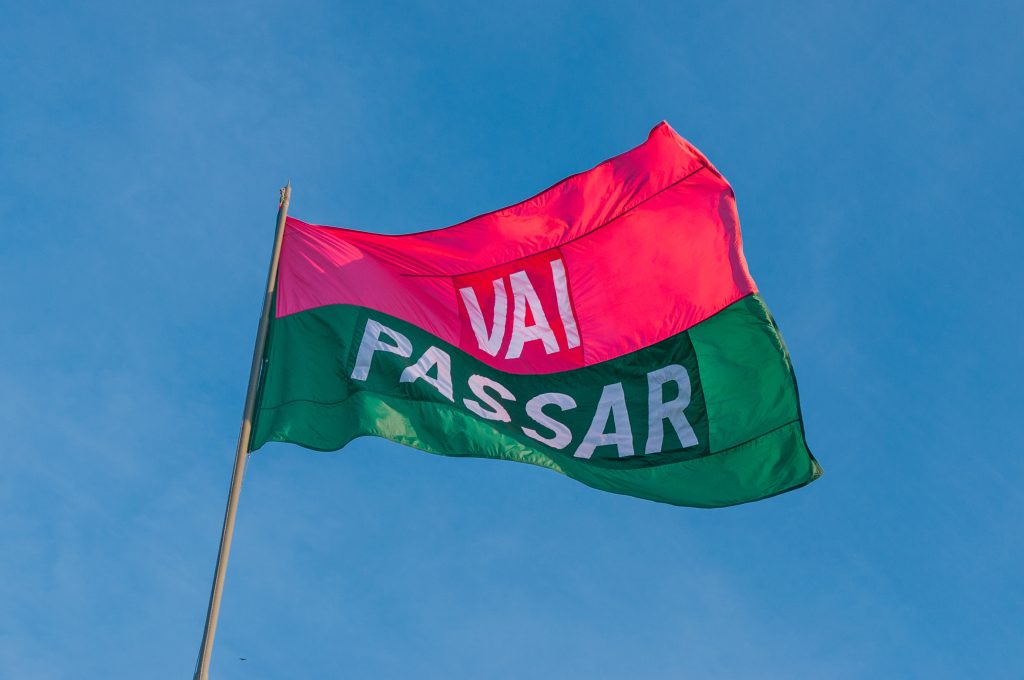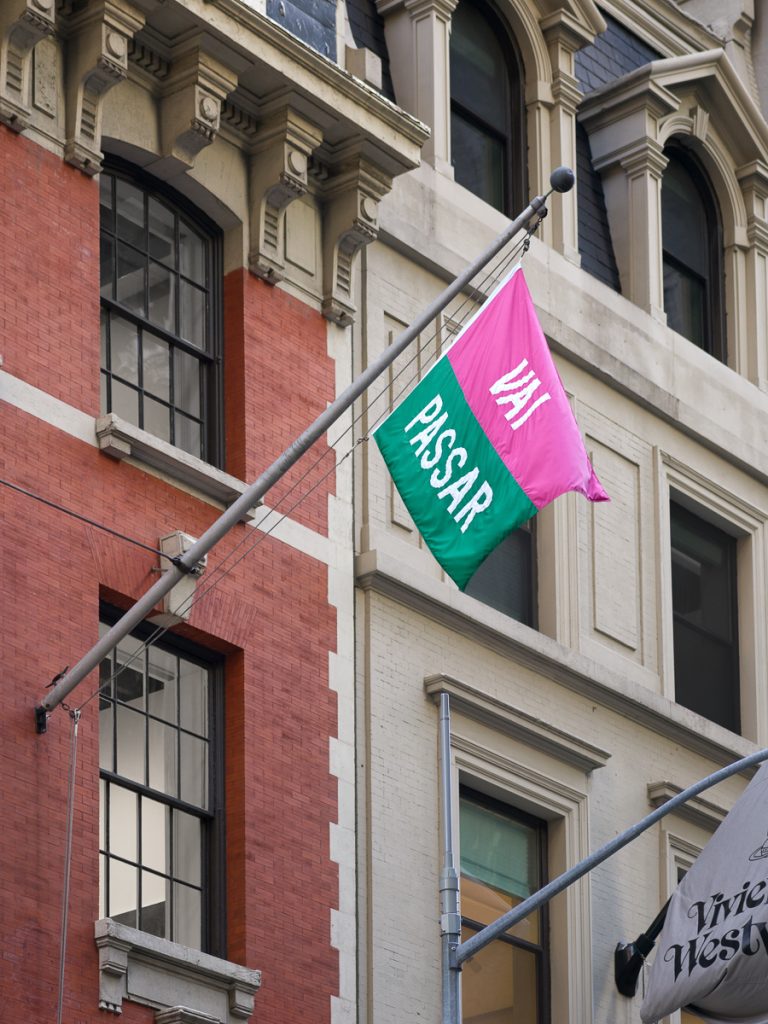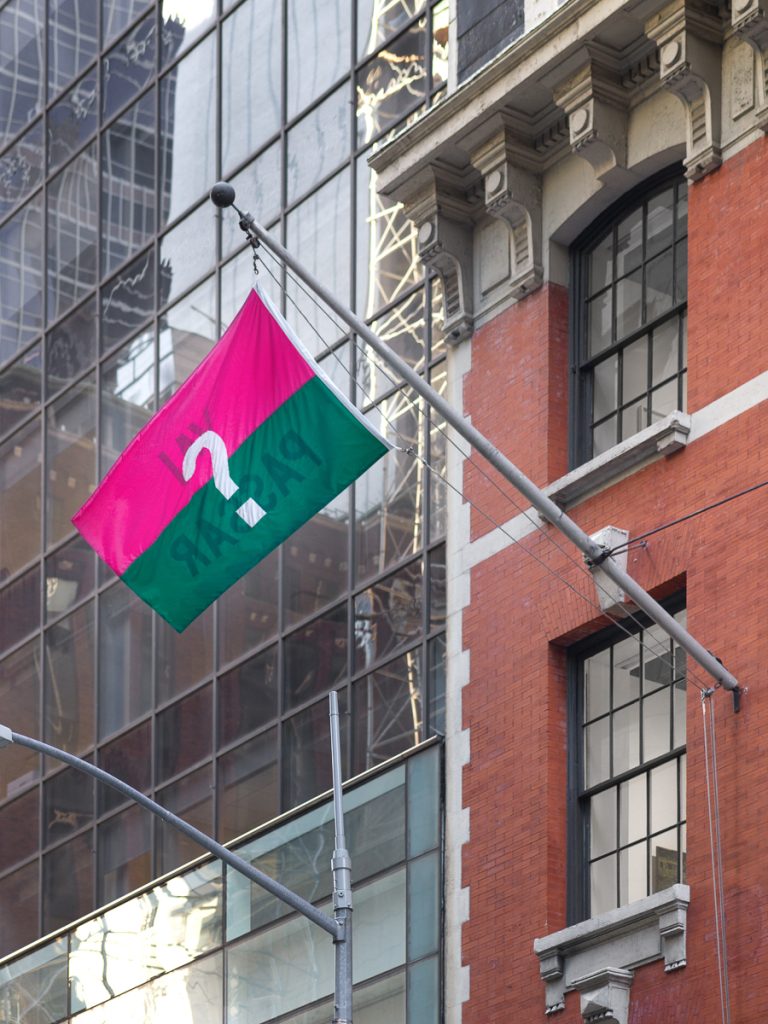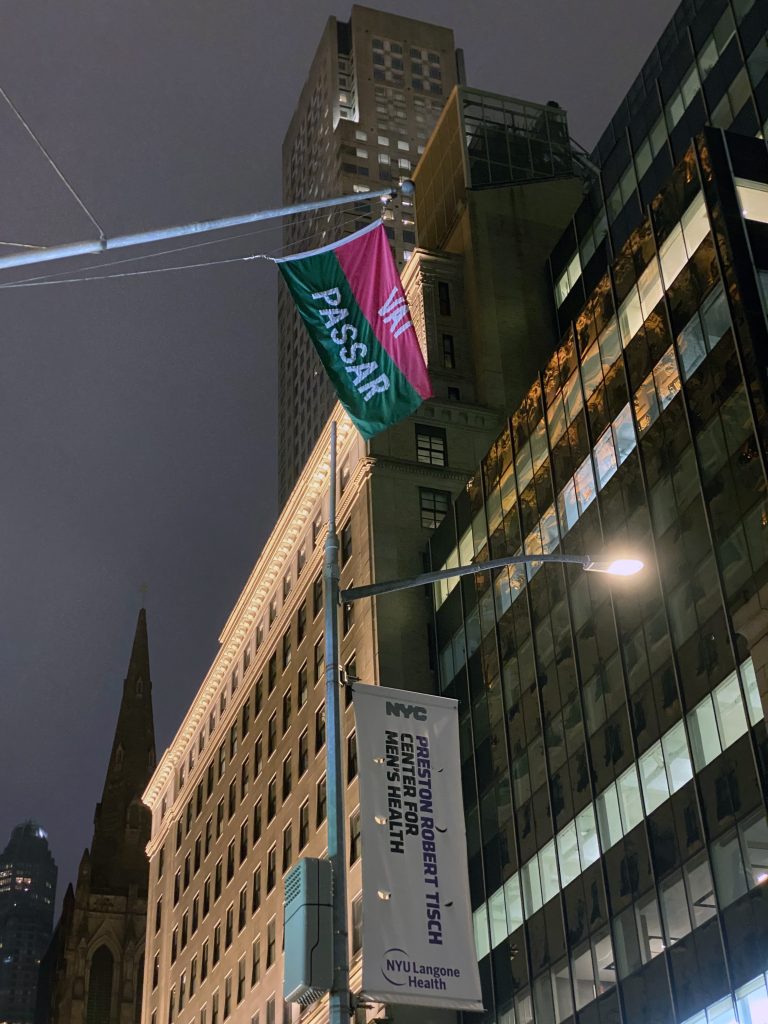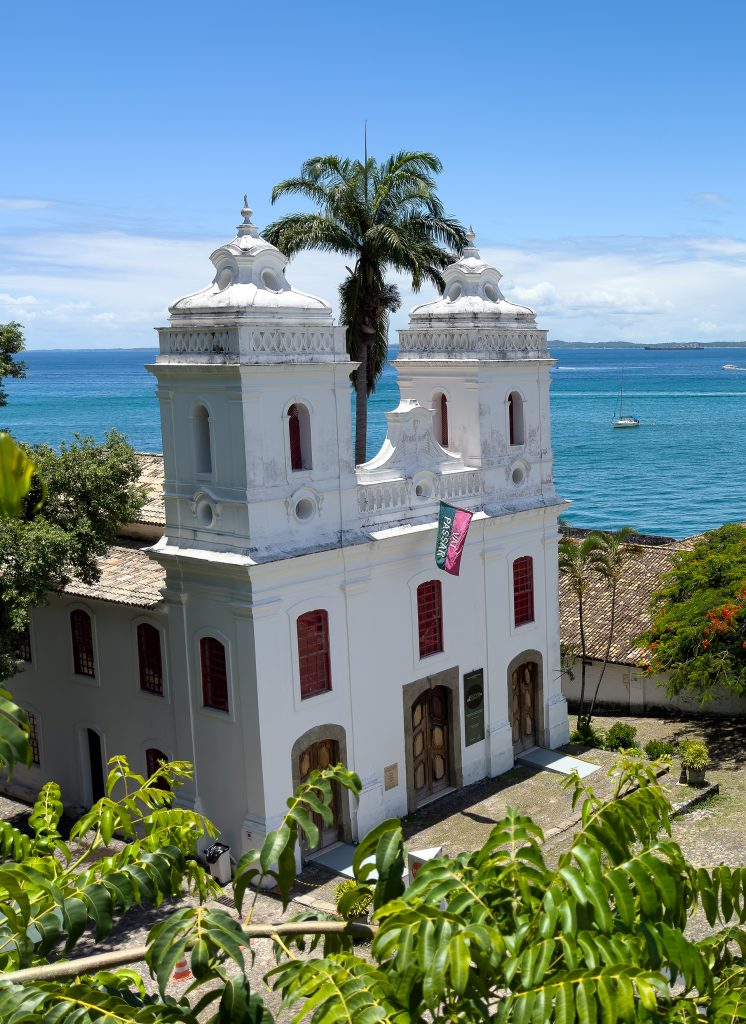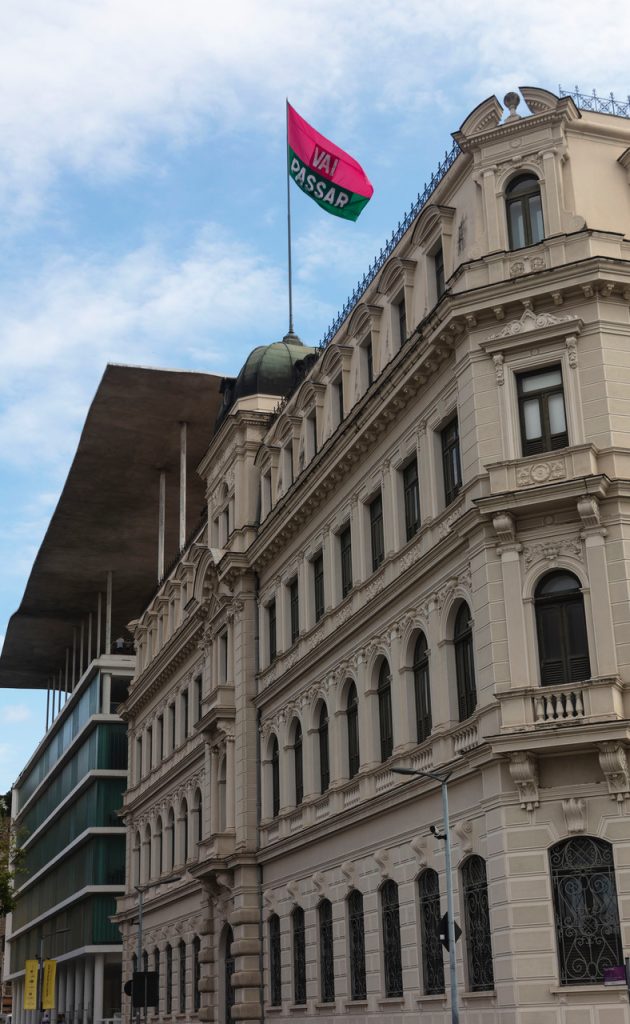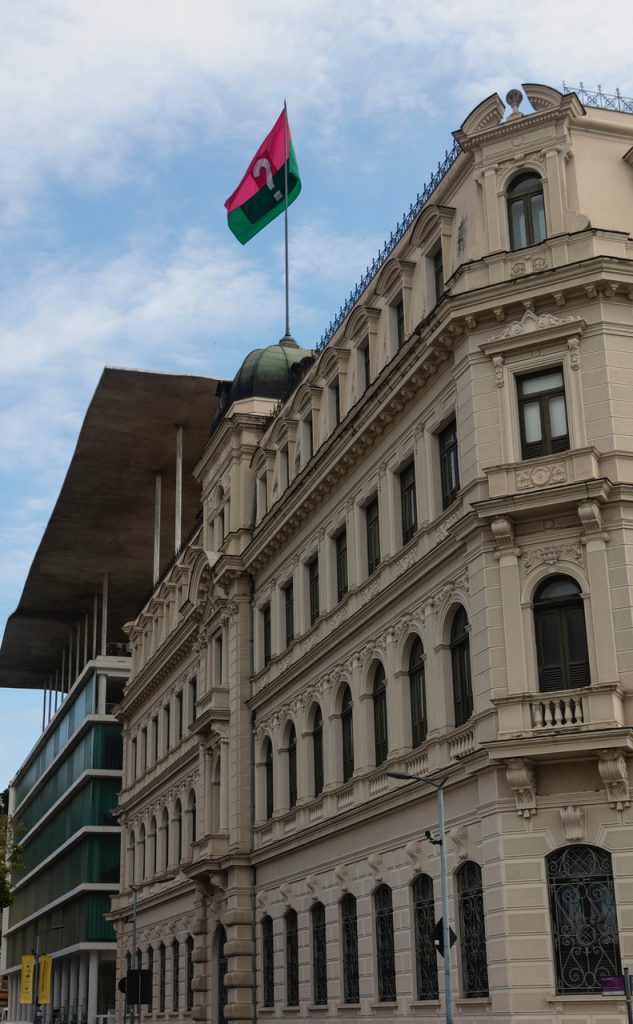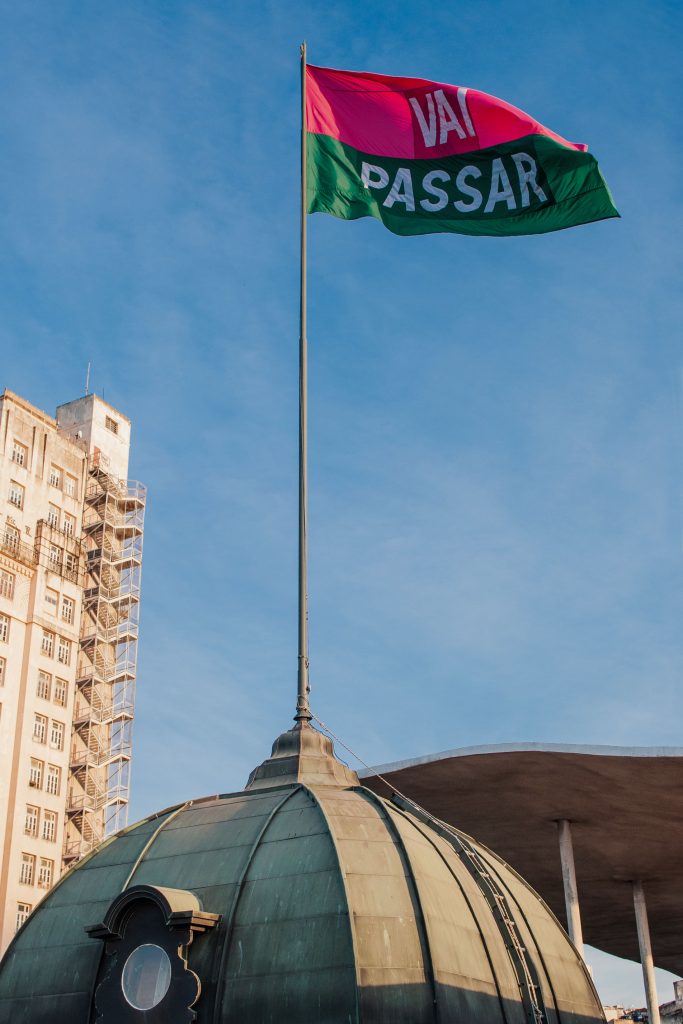


Will it Pass (?)



In January 2020, I saw Marcos Chaves’ fluttering green and pink flag live at the top of the Museu de Arte do Rio (MAR), with the phrase that has entered my survival songbook ever since I saw the work in photos: it will pass. The image of the flag began circulating on social media a few months after the 2018 elections and I clung to “it will pass” more than “no one lets go of anyone’s hand.”
Yesterday, Marcos Chaves posted on Instagram the two sides of a multiple of the flag. There was a question mark on the back of the cloth. I wrote it down for him. Was that question mark already on the piece in the museum? Yes, it was. It’s always had the question mark, since April 2019.
That trip to Rio was my last flight before social isolation. Why didn’t I see the question mark? Because I really wanted the disaster to pass, on its own, with time. I then realized that this work not only invokes the samba “Vai passar”, by Chico Buarque, which would already establish a broad field of interpretations about the “banner of the general sanatorium”, but also keeps the banner linked to the observation of the character Rieux, from the book “The Plague”, by Albert Camus, about the persistence of fascism: “the plague bacillus never dies or disappears, it can lie dormant in furniture and clothing for dozens of years, it waits patiently in bedrooms, basements, trunks, handkerchiefs and paperwork. ”
In Brazil, the bacillus variant had already declared itself in favor of death and torture before we go to the polls for the 2018 presidential election. The hundreds of thousands of deaths from the pandemic in Brazil have not occurred due to incompetence or madness on the part of those in power. On the contrary, they are the result of competence in carrying out what was announced as a value and priority, and which corresponded to the desire of more than half of the valid votes, a desire that was dormant, waiting patiently in the psychic basements. However, if the bacillus insists on coming back, there are the doctors who, like Rieux in Camus’ work, continue to take care of it, despite the scoundrels.
On a night in August 2020, covered from head to toe in safety equipment against infection by the virus, and to the sound of a track with the noises of ICU respirators, traffic advisors organized a procession with more than 100 cars moving in reverse on Avenida Paulista. In the piece, conceived by Teatro da Vertigem and Nuno Ramos, and filmed by Eryk Rocha, the cars drove two and a half kilometers to the Consolação cemetery, where trumpet player Richard Fermino played the Brazilian national anthem backwards, note for note. And they raised a flag, with a reproduction of one of the drawings from Flávio de Carvalho’s “Tragic Series”, a portrait of the artist’s mother in her last moments of life.
The procession had vehicles from funeral homes at the beginning and end of the line of cars. I think it was the burial of the certainty that “it will pass.” We must not let it come back, and start fighting the virus at the very beginning of the next plague. Art warns, because it is made up of signs of life. You can see when they start to be attacked.
Paula Braga, Arte Contemporânea: Modos de Usar, Editora Elefante, 2021
will always pass
I’m writing this text upon waking up on October 31, 2022, with teary eyes and a relieved heart.
When I made this flag in early 2019, sad and discouraged by the choice of most Brazilians , I sought to concentrate on a thought that would drive me forward, to go onward, and so I grabbed onto the mantra Vai Passar [This Will Pass] but with the certainty that we would have to undergo a long process, requiring a great deal of resistance and continuous work for it to actually pass. On the other side of the flag, the question mark establishes a mediation with the uncertainties of the future and beckons the viewer to think about doubt as a factor of extra motivation, open to the powers that insist on resistance to what is given or being consolidated.
The flag was unfurled for one year, from April 2019 to March 2020, at the top of the dome of the Museu de Arte do Rio de Janeiro. This will be, however, the first time that it is shown with just one of its sides visible, resting the question mark against the wall. During this moment of transition of governments and ideals, Vai Passar remains strongly on its course toward the full recovery of democracy, toward a juster society, respect for science and for workers in the cultural and art fields and, above all, toward the binding energy of love that unites us.
It is time for doubt and fear to give way to the reconstruction of the country, to new proposals and ways of being together.
With this in mind, I chose for this show works from the Roberto Marinho collection that deeply affect me as an artist and, on that basis, I included others that are related with these choices, for example, Leonilson’s painting and the drawings by Ismael Nery and Jean Cocteau, along with a work that I made in the 1980s that resembles a drawing by Mira Schendel in terms to its economy of lines. The selection is diverse in regard to artists and media, as is the collection itself, though it is unique as a whole.
I dedicate the power of these works gathered here to the nearly 700 thousand Brazilians who were taken by the pandemic, to their families, and to my colleagues who departed and can no longer be present, celebrating and experiencing this change together with us, even though some are here, represented by their works.
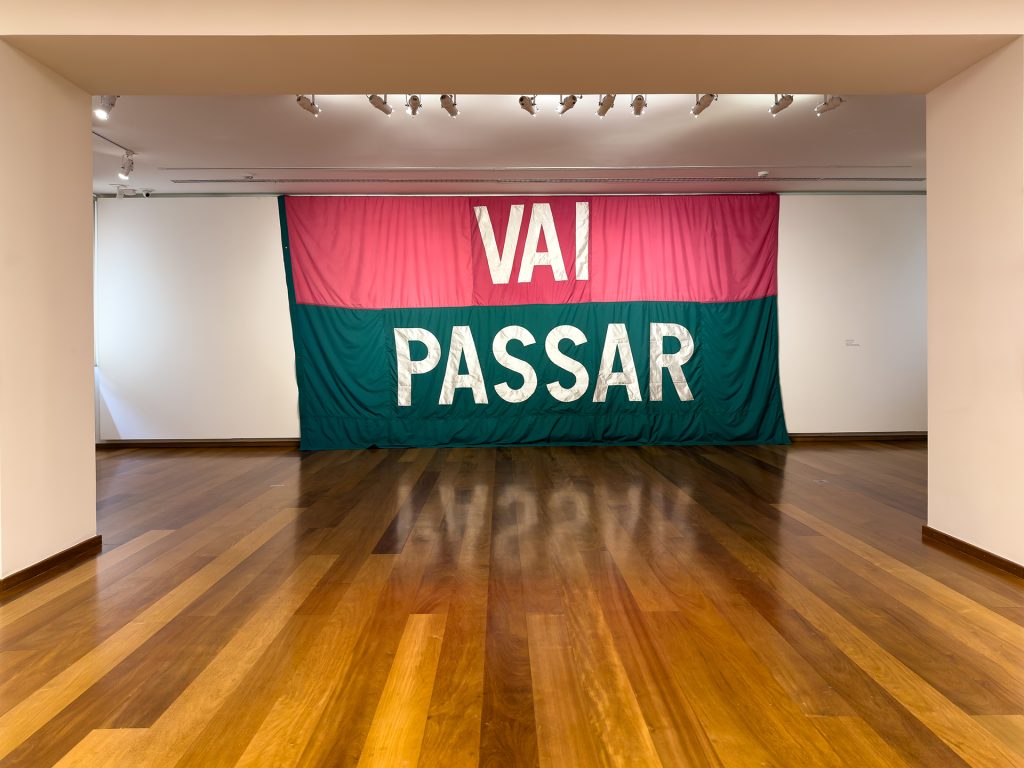
Marcos Chaves, history as hope[lessness]
The immediate historiography, the blunt criticism of the present, the belief in the future of the changes that are expected to occur already move art around what happened since January 1, 2019. On the mast of the Rio Art Museum building (MAR) was raised a green and pink flag, the colors of the flag of the Mangueira samba school, which has on one side the words “It will pass” and, on the other, a threatening question mark. Vai passar [It will pass] (2019), Marcos Chaves’s flag is ambivalent, for those who are confident in a better future, less entropic than the present, it is a statement: It will pass. Period. For skeptics, it is pure doubt: will evil “pass?”. “Weeping may endure for a night, but joy cometh at dawn” (Psalm 30, verse 6) – is
Biblical and became a proverb in the Portuguese language: “There is no evil that always lasts, nor good which does not end.”
Marcos Chaves’ flag evokes optimistic and reticently the lyrics by Chico Buarque de Hollanda: “In this avenue a popular samba will pass.” and the memory of his lived time. The composer wrote for his time a song that is updated at any time: “In an unfortunate time / A page of our history / Faded memory passage / Of our new generations / Sleeping / Our motherland
so distracted / Not realizing it was subtracted / In dark transactions”.
Marcos Chaves is a chronicler of everyday life in Rio de Janeiro, with a look at his cultural landscape, the junction between nature and man’s work, the cultural ways of living urban kindness, its pains and the solutions of the homeless, in the precarious house of the man of the naked life. The artist is a true Carioca because he is loving and critical of the charms and social ills of
the beloved city.
Paulo Herkenhoff
